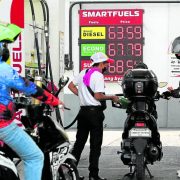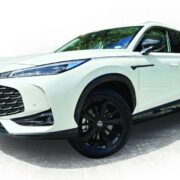Our cars don’t deserve our roads, and neither do you
Driving along EDSA the other night in a dinky little micro car, I quickly realized why the Skyway Stage 3 is becoming the default choice of many traversing the metropolis from north to south.
The capital region’s main thoroughfare is just a pockmarked surface that is composed mainly of unsmoothed slabs of concrete and cement, patches of asphalt that cover what used to be potholes, and neglected stretches of rotting roads that the local and national governments seem content on letting be, at least until another accident that goes viral or makes headlines happens.
The same scene is echoed across the country as national highways and countryside roads never seem to last long enough, with the subsequent road widening, road raising, or pipe laying just a few months away from destroying what was once a perfectly laid out road.
Off-spec speed bumps, or what we call humps, can wreak havoc on the underbelly of a car. At the same time, unreasonably steep ramps can damage the front bumpers of cars that are now deemed too low even though their ride heights remain unchanged from their countries of origin. Untended potholes can bengkong your precious mags or blow out a tire. And that’s just for areas where there are roads.
And with these realities, I raise the first of many questions that have been bugging me for quite some time now — are our roads ready for the cars that will use them?
Much has been said and written about how car manufacturers test their vehicles in local markets to see if there will be issues with the cars once they are made available at the showroom. Some brands even go to such lengths as raising the ride height of the model they will release in the Philippines in anticipation of the kind of roads their cars will drive on.
Carmakers often limit the sizes of wheels and the corresponding tires of their car models to smaller diameters to avoid damaging them on ruts or causing discomfort during daily drives.
Some brands refrain from introducing high-end models with bigger wheels precisely because their ride and performance are outright unsuitable for our roads.
Well, it’s good if you find a brand that takes pains to re-engineer its models and make them more suitable for local road conditions. But why should it be this way?
You could contend that if carmakers do not make the products they sell fitted to the local market, in this case, our roads, they won’t be able to sell them. No sales means no profits. No profits means no business.
But have we grown so insensitive to the fact that our roads leave much to be desired? Have we just waived the flag of surrender to those we put in power as they neglect their duties to provide us, the tax-paying public, the quality service we deserve and should expect?
Why should private companies such as San Miguel or Metro Pacific Tollways be the ones to make our roads drivable and then charge us in the process? Shouldn’t the Department of Public Works and Highways, the Department of Transportation, and even the Local Government Units (LGUs) be all on top of the situation ensuring our local roads are as comfortable and safe to drive on as possible?
And why should cars that otherwise would have ridden well over asphalt-laden roads, be relegated to an undesirable status just because they couldn’t keep up with the sub-par quality of our dilapidated avenues?
Is it the car companies’ fault that our roads are what they are? Is it their fault that the lane markings on our roads are either faded or overlapping to the point that lane-centering Advanced Driving Assistance features just give up working?
Should we blame the car manufacturers for introducing handsome 19- or even 21-inch wheels and tires as standard, even when they’ll likely make their cars’ ride harsh? And should we hold carmakers to account for removing the spare tire altogether, even though jagged road cuts and sharp potholes are everywhere in the Philippines?
Now, if we answer yes to any of these last few questions, does that mean we’re content with the kind of roads that we now have? Do we find them acceptable even? Are they now part of the realities we must contend with if we are to live (and die) for our beloved country?
As the car I drove hopped, skipped, and jumped over EDSA, I wondered why we don’t have a mechanism to sue local or even national government officials for dereliction of duty. And to call them out for mismanagement and lack of empathy for the riding public.
For what good is a government when it can’t even address the basic infrastructure of a civilized society?
So the next time you test drive a car, ride a bicycle, or walk along a disappearing sidewalk, remember this: it’s not you or your ride’s fault. Cars, motorcycles, and bicycles in 2023 should be fine if they can drive smoothly on an asphalt-laden road. Anything else that makes your ride less comfortable and relaxing to drive is care of your misappropriated taxes.
















